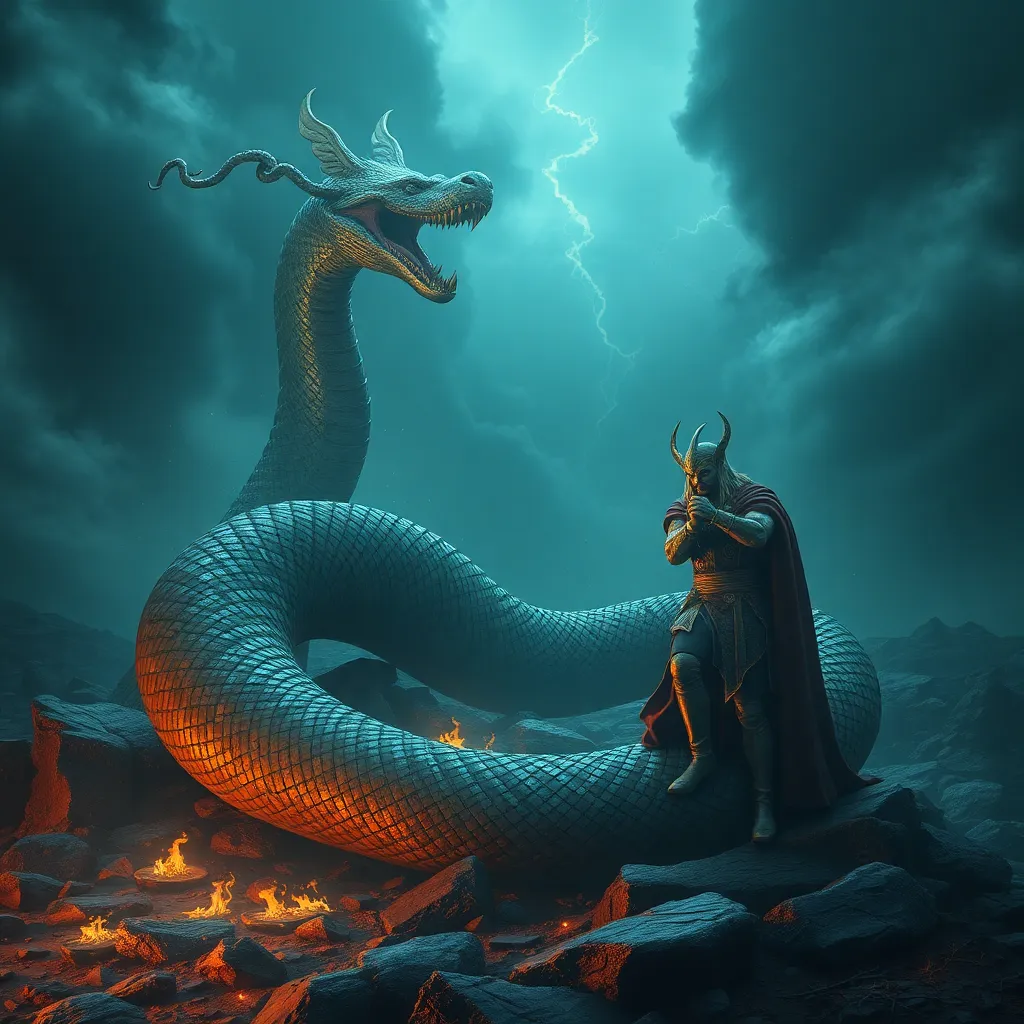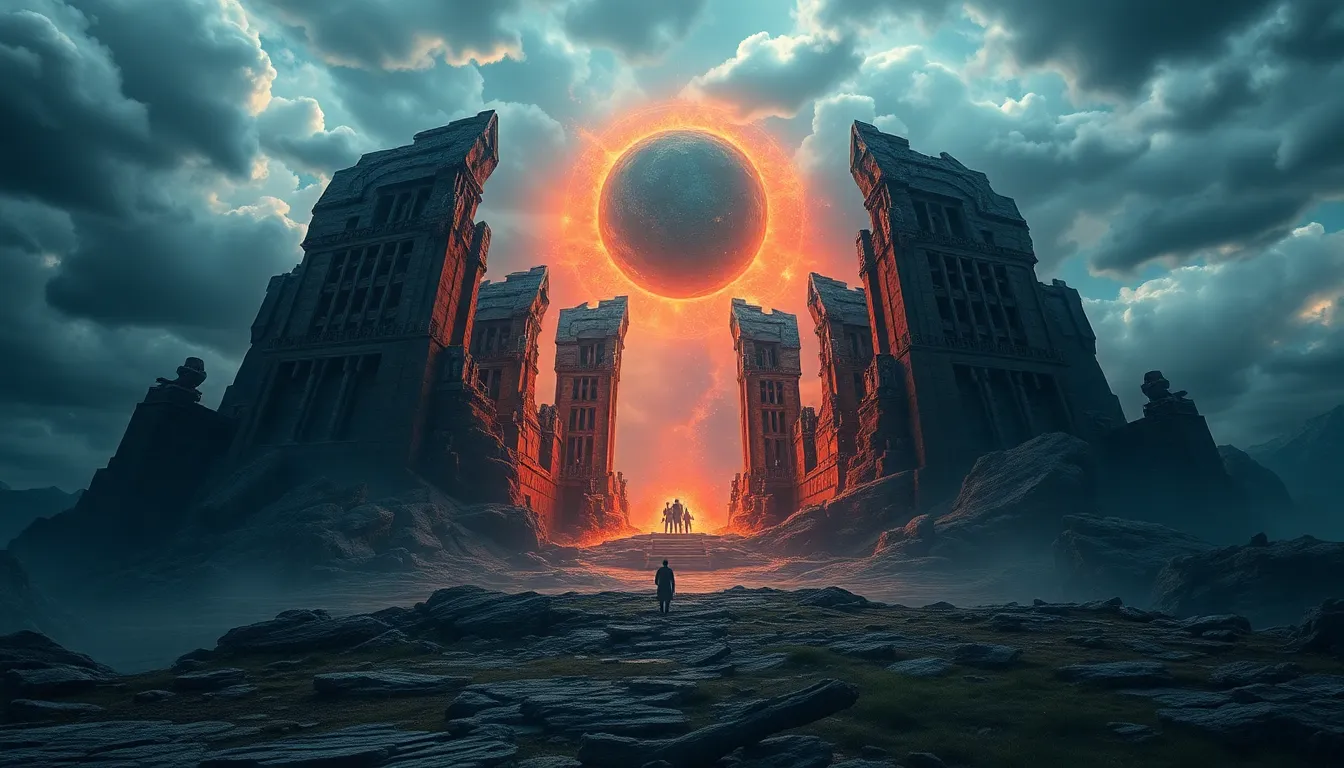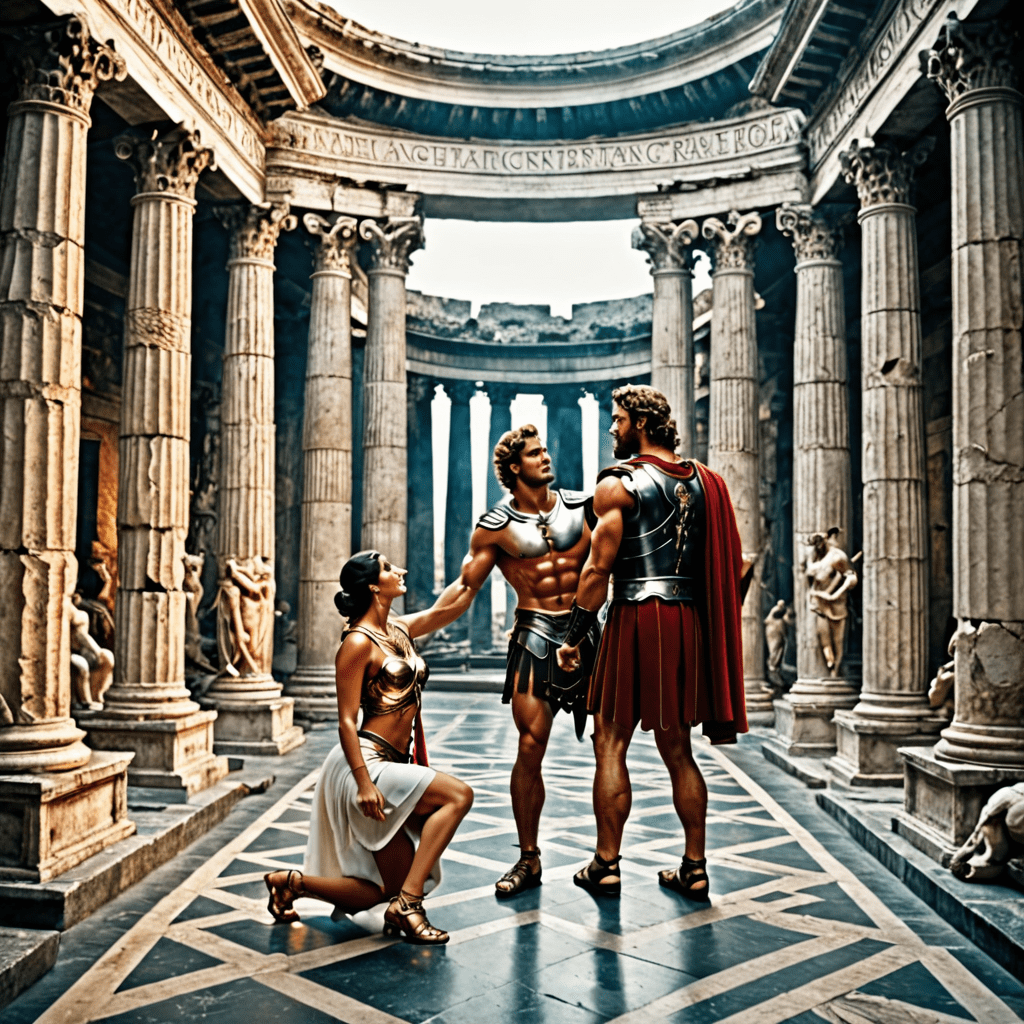The Serpent and the God: Jörmungandr’s Relationship with Thor in Norse Lore
Introduction to Norse Mythology
Norse mythology is a rich tapestry of tales that encompass gods, giants, and various other beings. Among the most significant figures are Odin, the all-father; Freyja, the goddess of love and war; and Thor, the god of thunder. Central to many of the narratives are themes of creation, destruction, fate, and the struggle between order and chaos. One of the most intriguing figures in this mythology is Jörmungandr, or the Midgard Serpent, who embodies chaos and destruction, standing in stark contrast to Thor, the protector of the cosmos.
Jörmungandr: The World Serpent
Jörmungandr is one of the children of Loki, the trickster god, and the giantess Angerboda. His immense size is said to be so great that he encircles the Earth, grasping his own tail in a cosmic embrace. In Norse cosmology, he plays a significant role, symbolizing the chaos and unpredictability of nature.
- Origins: Jörmungandr was thrown into the ocean by Odin, where he grew to an enormous size.
- Symbolism: He represents the dangers of the natural world, the inevitability of fate, and the concept of chaos.
- Role: As a creature of chaos, he is often seen as a threat to the gods and humanity alike.
Thor: The God of Thunder
Thor is one of the most venerated gods in Norse mythology, known for his strength, courage, and protective nature. Armed with his iconic hammer, Mjölnir, he is often called upon to defend Asgard and Midgard (the realm of humans) from giants and other threats.
- Attributes: Thor is associated with thunder, lightning, storms, oak trees, strength, the protection of mankind, and hallowing and fertility.
- Significance: He is a symbol of protection and order, standing against the chaotic forces represented by beings like Jörmungandr.
- Cultural Worship: Thor was widely worshipped across Scandinavia, with many rituals dedicated to him for protection and prosperity.
The Prophecy of Ragnarök
Ragnarök, often referred to as the Twilight of the Gods, is a series of events that culminate in the death of many gods, including Odin and Thor, and the destruction of the world as it is known. This apocalyptic scenario is crucial in Norse mythology, as it signifies both an end and a new beginning.
- Importance: Ragnarök represents the cyclical nature of existence, where death leads to rebirth.
- Role of Jörmungandr: It is foretold that Jörmungandr will rise from the ocean, poisoning the sky with his venom during these events.
- Thor’s Destiny: Thor is prophesied to face Jörmungandr in a final battle, where both will meet their fates.
Encounters Between Jörmungandr and Thor
The relationship between Jörmungandr and Thor is marked by confrontation and hostility, with several myths illustrating their epic encounters. One of the most notable stories involves Thor’s fishing expedition.
- The Fishing Episode: In this tale, Thor goes fishing with the giant Hymir. Using an ox-head as bait, he attempts to catch Jörmungandr, leading to a fierce struggle.
- Battles: Their conflicts symbolize the ongoing struggle between order and chaos, with Thor often striving to eliminate the threat Jörmungandr poses.
- Implications: Each encounter deepens the enmity between the two figures, foreshadowing their fated confrontation at Ragnarök.
Symbolic Interpretations of Their Conflict
The struggle between Jörmungandr and Thor can be viewed through various symbolic lenses. Their conflict is not merely physical but represents larger themes in Norse belief.
- Chaos vs. Order: Jörmungandr embodies chaos and unpredictability, while Thor represents order and protection, highlighting the constant battle within the universe.
- Nature vs. Civilization: Their interactions can also be interpreted as the struggle between the untamed forces of nature and the civilizing efforts of humanity.
- Cyclical Conflict: The recurring nature of their battles reflects the Norse belief in the cyclical nature of life and death, creation and destruction.
Cultural Impact and Legacy
The relationship between Jörmungandr and Thor has left an indelible mark on literature, art, and modern popular culture. Their stories continue to fascinate and inspire.
- Literature: Many contemporary authors draw from Norse mythology, weaving themes of Thor and Jörmungandr into their narratives.
- Art: Artistic representations of Thor battling the serpent can be found throughout history, symbolizing the eternal struggle between good and evil.
- Modern Interpretations: Films, books, and video games often feature these characters, showcasing their timeless appeal and relevance.
Conclusion: The Duality of Existence
Jörmungandr and Thor’s relationship serves as a profound exploration of the duality of existence within Norse mythology. Their conflict reflects the broader themes of fate, balance, and the human condition. In a world where chaos and order constantly vie for dominance, their stories resonate with modern audiences, reminding us of the eternal struggle inherent in life.
The legacy of Jörmungandr and Thor continues to inspire and provoke thought, illustrating the complexities of existence and the inevitability of conflict and resolution.



